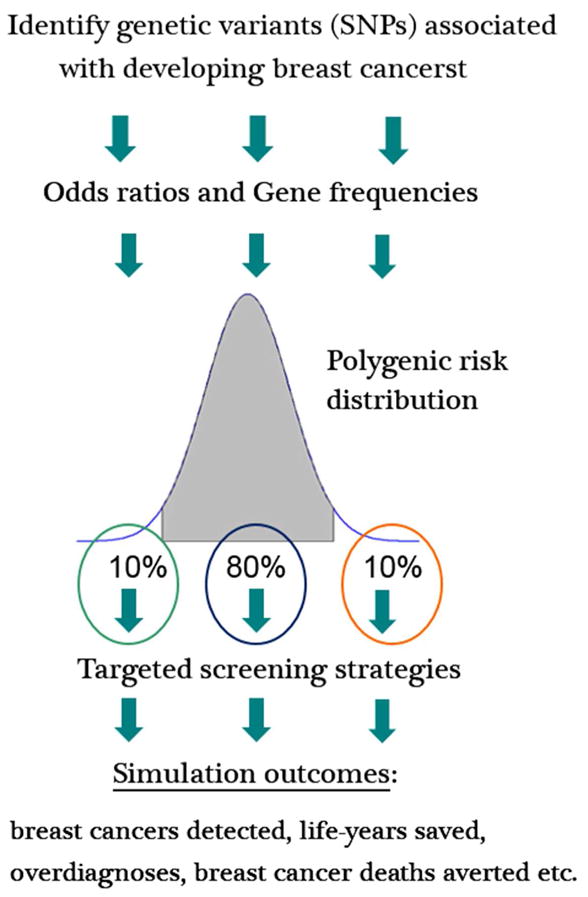Figure 3.

Simulating a personalized approach to breast cancer screening based on genetic risk profile. Genetic variants for breast cancer have different risk alleles. Multiple single nucleotide polymorphisms (SNPs) combined together can be translated into a polygenic risk score to stratify women based on their polygenic risk. In Figure 3, a simplified analysis of the potential population impact of using polygenic risk to inform screening strategies is demonstrated by dividing the population into three (low, median, high) risk groups with varying prevalence. In this simplified example 10% of the population has a low risk of developing breast cancer, 80% an average risk, and 10% a high risk. More frequent screening could be offered to the high risk group and less frequent screening (compared to average risk group) could be offered to the low risk group. With more risk groups, or even a continuous risk distribution we could potentially optimize the tailoring of screening strategies based on polygenic risk which would lead to a redistribution of benefits and harms compared to current practice. A more in depth analysis will be performed in the near future within CISNET.
